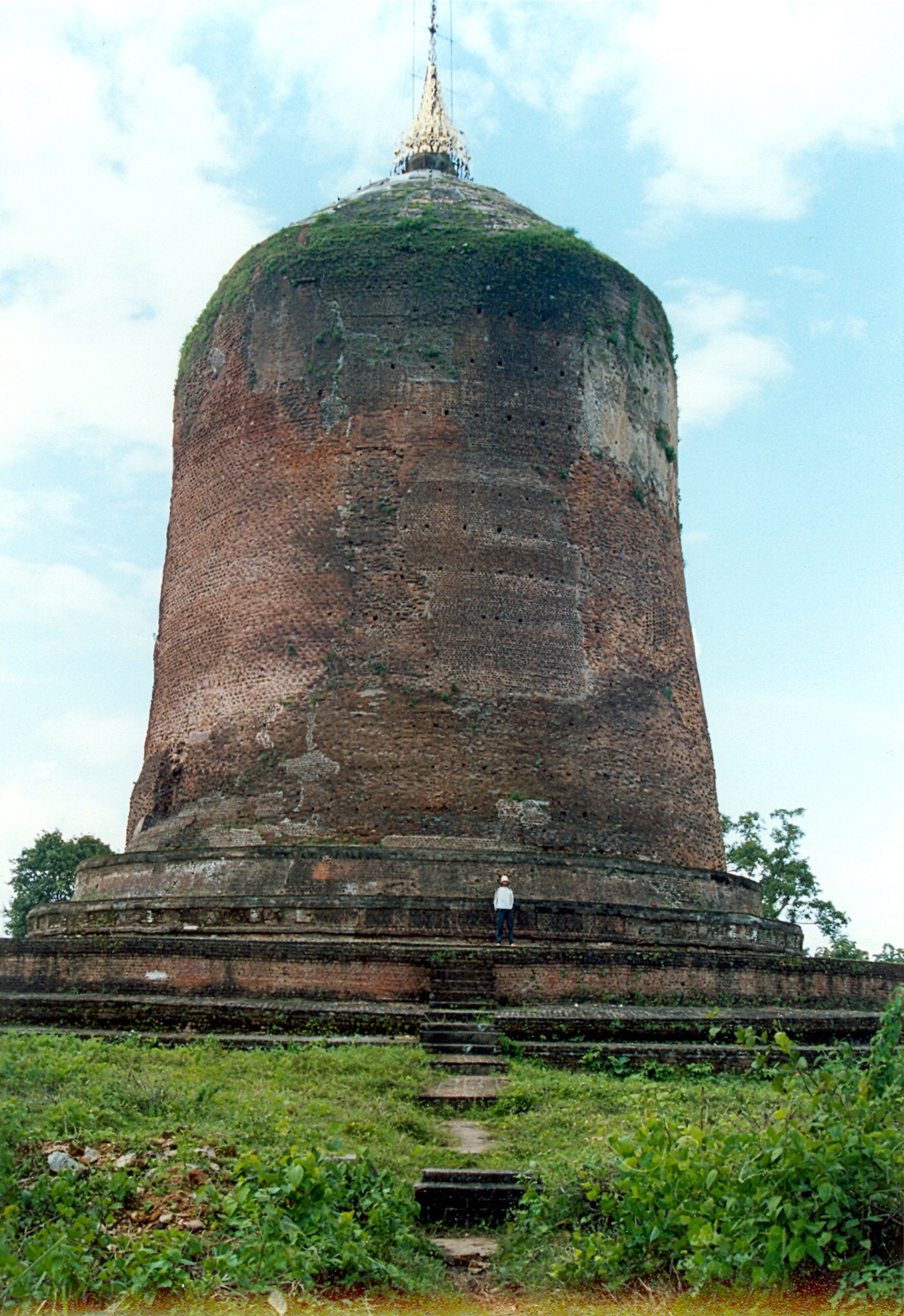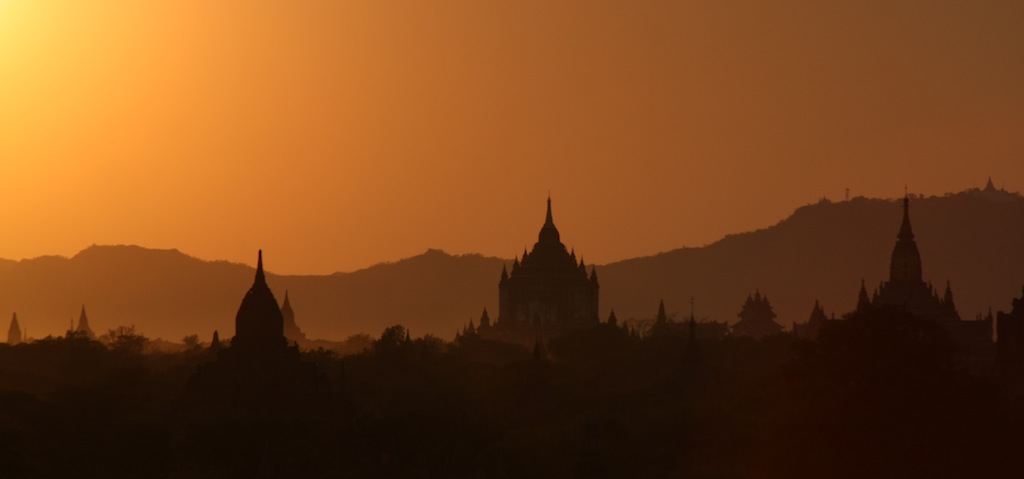|
Mya Tha Lun Pagoda
The Mya Tha Lun Pagoda ( my, မြသလွန်ဘုရား) is a Buddhist Burmese pagoda, pagoda and the landmark of Magway, Myanmar, Magway which is located on the river side of the Irrawaddy River, Irrawaddy. History According to legend, the pagoda was initially built by a wealthy man called U Baw Gyaw and his wife. It was raised from its original height of to a height of by King Saw Lu (1077-1084) of Bagan. The pagoda faced a huge earthquake in 1847 and it was rebuilt by the mayor of Magway, Myanmar, Magway, Min Din Min Hla Kyaw Gaung to the present height of approximately . It is famous because The Bed of Buddha is placed inside it. References [...More Info...] [...Related Items...] OR: [Wikipedia] [Google] [Baidu] |
Magway, Myanmar
Magway (, ) is the capital city of Magway Region (formerly Magway Division) of Myanmar, and situated on the banks of the Irrawaddy River. The Myathalun Pagodathe beauty of Magway located at the north of the city, is the landmark of Magway. Magway Region is famous for the cultivation of sesame and many kinds of nuts. It is also the second largest city of Magway Region and it is home to Magway Airport. History During British Occupation, Magway was a township of Minbu Division (or) Minbu province. Minbu Region was established with 3 districts. They are Minbu District, Thayet District and Yenangyaung District. Magway was a township of Yenangyaung District until 1974. On 2 March 1962, the military led by General Ne Win took control of Burma through a coup d'état, and the government has been under direct or indirect control by the military. A new constitution of the Socialist Republic of the Union of Burma was adopted in 1974. By 1974, the name of Minbu region was changed to Magway ... [...More Info...] [...Related Items...] OR: [Wikipedia] [Google] [Baidu] |
Magway Region
Magway Region ( my, မကွေးတိုင်းဒေသကြီး, ; formerly Magway Division) is an administrative divisions of Myanmar, administrative division in central Myanmar. It is the second largest of Myanmar's seven divisions, with an area of . Pa Del Dam (ပဒဲဆည်) is one of the dams in Aunglan Township, Magway Division. The capital and second largest city of the Magway Division is Magway, Myanmar, Magway. The largest city is Pakokku. The major cities of Magway Division are Magway, Myanmar, Magway, Pakokku, Aunglan, Yenangyaung, Taungdwingyi, Chauk, Minbu, Thayet and Gangaw. Geography Magway Region sits approximately between north latitude 18° 50' to 22° 47' and east longitude 93° 47' to 95° 55'. It is bordered by Sagaing Region to the north, Mandalay Region to the east, Bago Region to the south, and Rakhine State and Chin State to the west. History Fossils of the early primates over 40 million years old were excavated in the Pondaung and Ponnya ... [...More Info...] [...Related Items...] OR: [Wikipedia] [Google] [Baidu] |
Theravada
''Theravāda'' () ( si, ථේරවාදය, my, ထေရဝါဒ, th, เถรวาท, km, ថេរវាទ, lo, ເຖຣະວາດ, pi, , ) is the most commonly accepted name of Buddhism's oldest existing school. The school's adherents, termed Theravādins, have preserved their version of Gautama Buddha's teaching or ''Dharma (Buddhism), Buddha Dhamma'' in the Pāli Canon for over two millennia. The Pāli Canon is the most complete Buddhist canon surviving in a Indo-Aryan languages, classical Indian language, Pali, Pāli, which serves as the school's sacred language and ''lingua franca''.Crosby, Kate (2013), ''Theravada Buddhism: Continuity, Diversity, and Identity'', p. 2. In contrast to ''Mahāyāna'' and ''Vajrayāna'', Theravāda tends to be conservative in matters of doctrine (''pariyatti'') and monastic discipline (''vinaya''). One element of this conservatism is the fact that Theravāda rejects the authenticity of the Mahayana sutras (which appeared c. ... [...More Info...] [...Related Items...] OR: [Wikipedia] [Google] [Baidu] |
Buddhism
Buddhism ( , ), also known as Buddha Dharma and Dharmavinaya (), is an Indian religion or philosophical tradition based on teachings attributed to the Buddha. It originated in northern India as a -movement in the 5th century BCE, and gradually spread throughout much of Asia via the Silk Road. It is the world's fourth-largest religion, with over 520 million followers (Buddhists) who comprise seven percent of the global population. The Buddha taught the Middle Way, a path of spiritual development that avoids both extreme asceticism and hedonism. It aims at liberation from clinging and craving to things which are impermanent (), incapable of satisfying ('), and without a lasting essence (), ending the cycle of death and rebirth (). A summary of this path is expressed in the Noble Eightfold Path, a training of the mind with observance of Buddhist ethics and meditation. Other widely observed practices include: monasticism; " taking refuge" in the Buddha, the , and the ; ... [...More Info...] [...Related Items...] OR: [Wikipedia] [Google] [Baidu] |
Myanmar
Myanmar, ; UK pronunciations: US pronunciations incl. . Note: Wikipedia's IPA conventions require indicating /r/ even in British English although only some British English speakers pronounce r at the end of syllables. As John C. Wells, John Wells explains, the English spellings of both Myanmar and Burma assume a non-rhotic variety of English, in which the letter r before a consonant or finally serves merely to indicate a long vowel: [ˈmjænmɑː, ˈbɜːmə]. So the pronunciation of the last syllable of Myanmar as [mɑːr] or of Burma as [bɜːrmə] by some speakers in the UK and most speakers in North America is in fact a spelling pronunciation based on a misunderstanding of non-rhotic spelling conventions. The final ''r'' in ''Myanmar'' was not intended for pronunciation and is there to ensure that the final a is pronounced with the broad a, broad ''ah'' () in "father". If the Burmese name my, မြန်မာ, label=none were spelled "Myanma" in English, this would b ... [...More Info...] [...Related Items...] OR: [Wikipedia] [Google] [Baidu] |
Buddhist
Buddhism ( , ), also known as Buddha Dharma and Dharmavinaya (), is an Indian religion or philosophical tradition based on teachings attributed to the Buddha. It originated in northern India as a -movement in the 5th century BCE, and gradually spread throughout much of Asia via the Silk Road. It is the world's fourth-largest religion, with over 520 million followers (Buddhists) who comprise seven percent of the global population. The Buddha taught the Middle Way, a path of spiritual development that avoids both extreme asceticism and hedonism. It aims at liberation from clinging and craving to things which are impermanent (), incapable of satisfying ('), and without a lasting essence (), ending the cycle of death and rebirth (). A summary of this path is expressed in the Noble Eightfold Path, a training of the mind with observance of Buddhist ethics and meditation. Other widely observed practices include: monasticism; " taking refuge" in the Buddha, the , and th ... [...More Info...] [...Related Items...] OR: [Wikipedia] [Google] [Baidu] |
Burmese Pagoda
Burmese pagodas are stupas that typically house Buddhist relics, including relics associated with Buddha. Pagodas feature prominently in Myanmar's landscape, earning the country the moniker "land of pagodas." According to 2016 statistics compiled by the State Sangha Maha Nayaka Committee, Myanmar is home to 1,479 pagodas exceeding in height, a quarter of which are located in Sagaing Region. Several cities in the country, including Mandalay and Bagan, are known for their abundance of pagodas. Pagodas are the site of seasonal pagoda festivals. Burmese pagodas are enclosed in a compound known as the ''aran'' (အာရာမ်, from Pali ''ārāma''), with gateways called ''mok'' (မုခ်, from Pali ''mukha'') at the four cardinal directions. The platform surrounding a Burmese pagoda is called a ''yinbyin'' (ရင်ပြင်). Terms In the Burmese language, pagodas are known by a number of various terms. The umbrella term ''phaya'' (, pronounced ), which derives fr ... [...More Info...] [...Related Items...] OR: [Wikipedia] [Google] [Baidu] |
Irrawaddy River
The Irrawaddy River ( Ayeyarwady River; , , from Indic ''revatī'', meaning "abounding in riches") is a river that flows from north to south through Myanmar (Burma). It is the country's largest river and most important commercial waterway. Originating from the confluence of the N'mai and Mali rivers, it flows relatively straight North-South before emptying through the Irrawaddy Delta in the Ayeyarwady Region into the Andaman Sea. Its drainage basin of about covers a large part of Burma. After Rudyard Kipling's poem, it is sometimes referred to as ' The Road to Mandalay'. As early as the sixth century, the river was used for trade and transport. Having developed an extensive network of irrigation canals, the river became important to the British Empire after it had colonized Burma. The river is still as vital today, as a considerable amount of (export) goods and traffic moves by river. Rice is produced in the Irrawaddy Delta, irrigated by water from the river. In 2007, Myanmar ... [...More Info...] [...Related Items...] OR: [Wikipedia] [Google] [Baidu] |
Saw Lu
Saw Lu ( my, စောလူး ; also spelled Sawlu; also known as Min Lulin ( ), ; 19 April 1049 – 21 April 1084) was king of Pagan dynasty of Burma (Myanmar) from 1077 to 1084. He inherited from his father Anawrahta the Pagan Empire, the first ever unified kingdom of Burma (Myanmar) but proved an inexperienced ruler. In 1082, he faced a rebellion in Lower Burma, and was captured c. April 1083. He was later killed in captivity about a year later. Early life Saw Lu was born to King Anawrahta and Queen Agga Mahethi, Queen of the Southern Palace. The Burmese chronicles do not agree on the dates regarding his life and reign. The table below lists the dates given by the four main chronicles,Maha Yazawin Vol. 1 2006: 348 and scholarship. Moreover, the chronicles do not agree whether or not Saw Lu was older than Kyansittha, Anawrahta's other son. According to early chronicles, Kyansittha was older (20 years per ''Zata'') and (two years per ''Maha Yazawin''). However, later chro ... [...More Info...] [...Related Items...] OR: [Wikipedia] [Google] [Baidu] |
Bagan
Bagan (, ; formerly Pagan) is an ancient city and a UNESCO World Heritage Site in the Mandalay Region of Myanmar. From the 9th to 13th centuries, the city was the capital of the Bagan Kingdom, the first kingdom that unified the regions that would later constitute Myanmar. During the kingdom's height between the 11th and 13th centuries, more than 10,000 Buddhist temples, pagodas and monasteries were constructed in the Bagan plains alone, of which the remains of over 2200 temples and pagodas survive. The Bagan Archaeological Zone is a main attraction for the country's nascent tourism industry. Etymology Bagan is the present-day standard Burmese pronunciation of the Burmese word ''Pugan'' ( my-Mymr, ပုဂံ), derived from Old Burmese ''Pukam'' ( my-Mymr, ပုကမ်). Its classical Pali name is ''Arimaddanapura'' ( my-Mymr, အရိမဒ္ဒနာပူရ, lit. "the City that Tramples on Enemies"). Its other names in Pali are in reference to its extreme dry zone cl ... [...More Info...] [...Related Items...] OR: [Wikipedia] [Google] [Baidu] |
Pagodas In Myanmar
Burmese pagodas are stupas that typically house Buddhist relics, including relics associated with Buddha. Pagodas feature prominently in Myanmar's landscape, earning the country the moniker "land of pagodas." According to 2016 statistics compiled by the State Sangha Maha Nayaka Committee, Myanmar is home to 1,479 pagodas exceeding in height, a quarter of which are located in Sagaing Region. Several cities in the country, including Mandalay and Bagan, are known for their abundance of pagodas. Pagodas are the site of seasonal pagoda festivals. Burmese pagodas are enclosed in a compound known as the ''aran'' (အာရာမ်, from Pali ''ārāma''), with gateways called ''mok'' (မုခ်, from Pali ''mukha'') at the four cardinal directions. The platform surrounding a Burmese pagoda is called a ''yinbyin'' (ရင်ပြင်). Terms In the Burmese language, pagodas are known by a number of various terms. The umbrella term ''phaya'' (, pronounced ), which derives ... [...More Info...] [...Related Items...] OR: [Wikipedia] [Google] [Baidu] |



.jpg)
